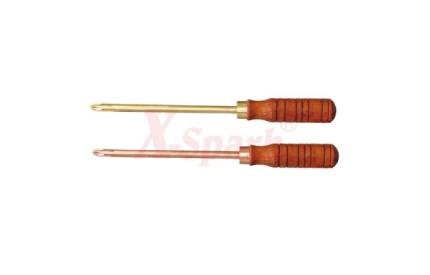What is a non-sparking tool?
A non-sparking tool is a safety tool, especially suitable for dangerous environments such as accidents and explosions. These explosions are usually triggered in an inflammable environment by sparks that result from the use of traditional hand tools made of steel. The use of these types of hand tools can cause friction, which may produce one or two sparks; even a single spark is enough to cause a heavy-duty explosion of devastating magnitude.
Other possible causes of explosions in this environment by giving off sparks are jobs that require equipment and material to be struck at with high impacts and accidental falling of steel-made hand tools on hard, rigid surfaces. Industrial non-sparking tools are a clever innovation of hand tools, with colored components.
This non-ferrous metal composition can greatly reduce the risk of sparks and ignition or explosion caused by these tools. Non-sparking tools are mostly made of brass, bronze, or alloys of copper and nickel, copper and aluminum or copper, and beryllium.
These hand tools are softer than ordinary steel tools because of the non-ferrous nature of their composition; because of their softness, they must be handled carefully to prevent them from being deformed by applying more pressure than required.
Non-sparking tools are widely used in various industries, from the chemical industry, oil refineries, fuel pipeline sector, gas-related applications, and even aviation applications.
Safety tips to keep in mind when using non-sparking tools
The following are the safety tips for using non-sparking tools correctly and keeping them in mint condition:
1) Maintaining cleanliness
These tools must remove any unwanted particle deposits and dust. Many times, the residue will fall on the end of the non-sparking tool; these deposits make the tool more prone to sparks, which can cause a fire or explosion.
2) Overall maintenance
Non-sparking tools are fragile equipment because they are very soft compared to hand-made steel tools. Therefore, it is important to use these tools as little as possible and maintain them frequently.

3) Cross ventilation
Dust is almost always present in places where the air is stagnant and there is no passage in and out. In the presence of dust, explosions in fragile environments are commonplace.
4) Inspection is essential
Actively monitoring the environment from time to time is another way that can ensure that a potentially dangerous situation hasn’t developed. Click here to get more information about us.
5) The user manual is the bible
All equipment comes with a user manual. Before using any device, the best thing to do is to thoroughly inspect it and act according to its requirements.
Final notes about the use of non-sparking tools
By following the safety tips mentioned above, you can easily ensure that your non-sparking tools are good to use. Hand tools are as important as non-sparking tools and must be purchased from high-quality manufacturers. Compromising the quality of non-sparking tools may cost your life.
We are non-sparking safety tools suppliers. Please feel free to contact us if you are interested in our products.
评论
发表评论